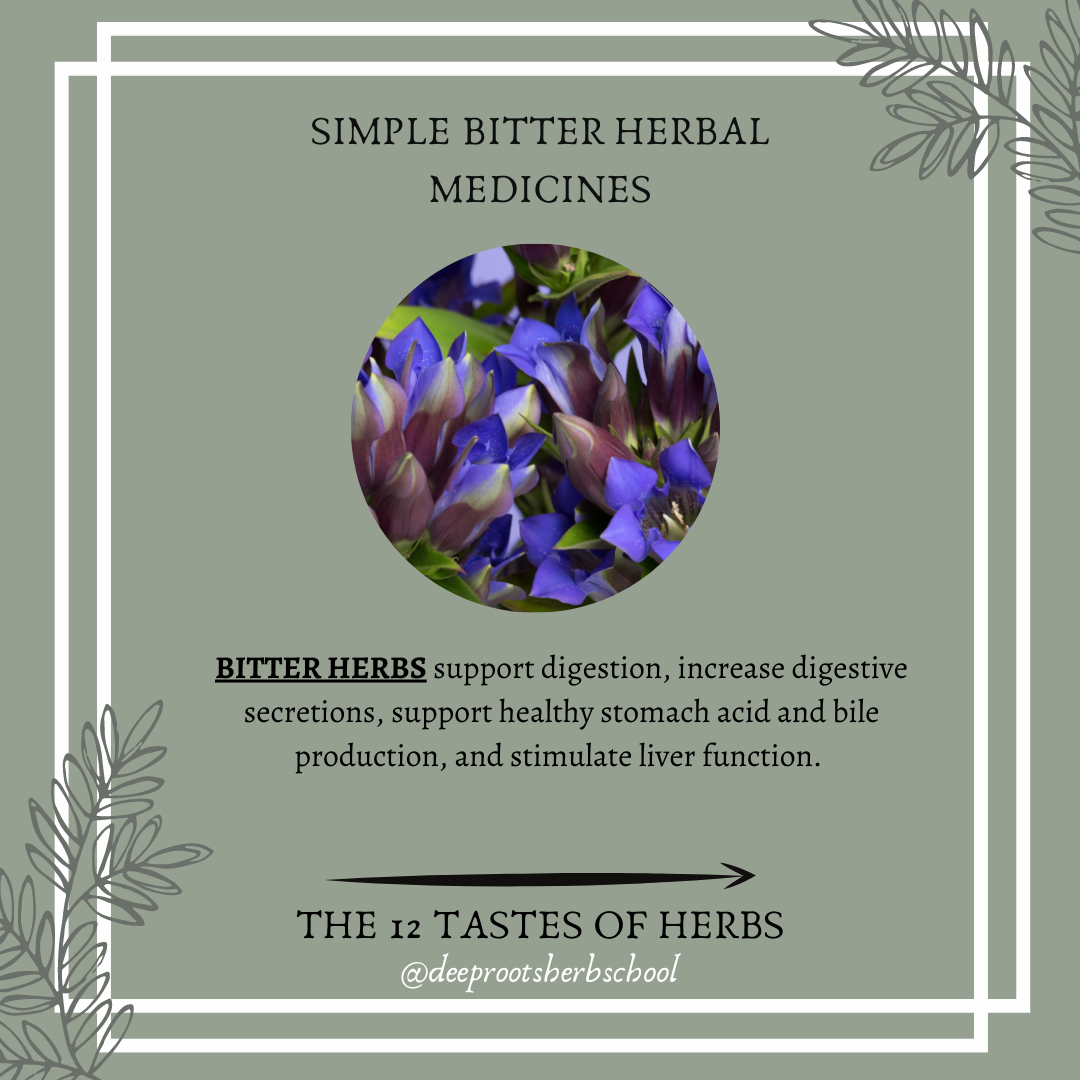Simple Bitter Herbs
/We can use our sense of taste and smell to ascertain the chemical profile of medical plants with surprising accuracy. This evolved ability has served to protect us by helping us to know what is food, what is medicine, and what is potentially toxic.
We can hone this sense and utilize it to determine the chemical makeup of plants and their general uses.
SIMPLE BITTERS are just that. They don't have aromatic properties or alkaloids like some other bitter herbs.
BITTER HERBS support digestion, increase digestive secretions, support healthy stomach acid and bile production, and stimulate liver function.
Some Examples of Simple Bitter Herbs:
Artichoke Leaf
Gentian
Wild Lettuce
Kale
Cascara sagrada
Hops
Common Properties of Simple Bitter Herbs:
shunts blood flow to the digestive organs
supports liver detoxification processes
stimulates stomach acid production
supports healthy bile and enzyme production
supports healthy appetite and reduces sugar cravings
some are stimulant laxatives
Do you have a favorite bitter herb?
If you are wanting to take a deeper dive into herbalism be sure to check out my Herbal Medicine Monthly Subscription Program where I teach you in-depth about one plant per month.














































